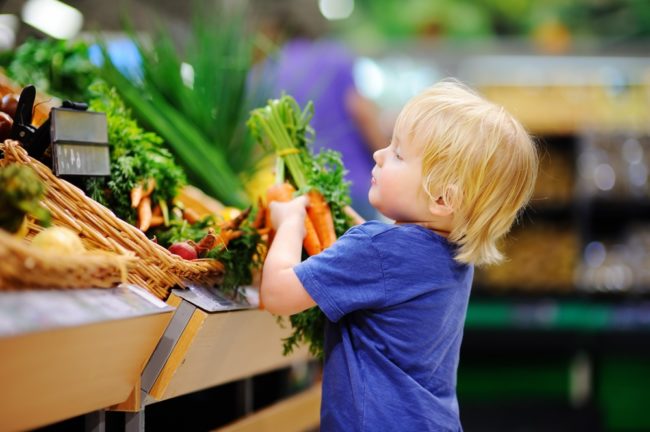It can be hard enough to get your kids to eat any fruits and vegetables. But how many do they actually need?
Fruits and vegetables are an essential part of a healthy diet for everyone — and most people don’t eat enough of them. In fact, the Centers for Disease Control and Prevention found that only 1 in 10 Americans eat the recommended number of servings on a regular basis.
Eating plenty of these healthy foods is especially important for kids as they grow and develop. But it can be difficult to know just how many servings a day little ones need. Let’s take a look at the recommendations.
Making sense of the guidelines
The number of fruits and vegetables your kids should eat in a day depends on their age — and, in later years, gender.
The United States Department of Agriculture recommends that children ages 2 to 6 have at least two servings of fruit and three servings of vegetables per day.
Children ages 6 to 12 and girls ages 13 to 18 should have at least three servings of fruit and four servings of vegetables per day.
Boys aged 13 to 18 should have at least four servings of fruit and five servings of vegetables per day.
Understanding serving size
Serving size also varies somewhat by age.
One serving of fruit for a young child is 1/4 to 1/2 a cup, while an older child’s serving is 1/2 to 1 cup. Here’s how that breaks down by fruit:
- Apple — one small apple would equal one cup; one-half a small apple would equal a half cup
- Banana — one large banana would equal one cup; one small banana would equal a half cup
- Grapes — 32 grapes would equal one cup; 16 grapes would equal a half cup
- Peach — one large peach would equal one cup; one small peach would equal a half cup
- Strawberries — eight large berries would equal one cup; four large berries would equal a half cup
One serving of vegetable for a young child is 1/4 a cup, while an older child’s serving is 1/2 to 1 cup. Here’s how that breaks down by vegetable:
- Carrots — two medium carrots would equal one cup; one medium carrot would equal a half cup
- Corn — one large ear would equal one cup; one small ear would equal a half cup
- Bell peppers — one large pepper would equal one cup; one small pepper would equal a half cup
- Tomato — one large raw tomato would equal one cup; one small raw tomato would equal a half cup
One important thing to keep in mind? Limit the amount of juice your little ones get. Juice is often loaded with sugar, and eating fruit in its whole form provides other nutrients, including fiber. Only one serving of fruits or vegetables per day should come in the form of juice.
Looking for more guidance about the foods your kids eat and their health in general? Talk with your pediatrician. If you haven’t found the right pediatrician for your family’s needs, find one here.







